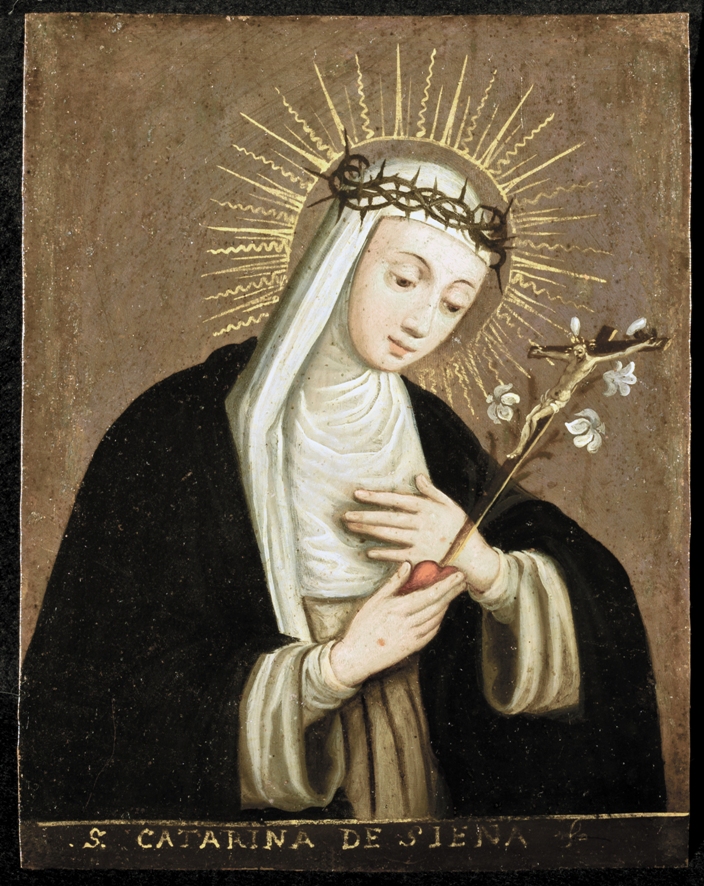After centuries of masculine domination, Italy’s most important museums are starting to show their feminine side in both boardrooms and exhibition halls. Women have been named to head a number of the country’s leading galleries in recent years, beginning with Cecilie Hollberg at the Accademia in Florence and Sylvain Bellenger at Naples’ Capodimonte Museum in 2015, and more recently, Barbara Jatta ,who this year became the first woman chosen by a pope to direct the Vatican Museums.

By Plautilla Nelli – Advancing Women Artists Foundation 2014-02-07 07:30:08, Public Domain, Link(Photo via Wikimedia Commons)
In addition to taking the helm in managing Italy’s struggling state museums, women have also begun to take center stage as artists in both special exhibitions and permanent collections. A major retrospective dedicated to Artemisia Gentileschi, the greatest female artist of the Baroque age, has been one of the most successful exhibitions in Rome since it opened in December, and Eike Schmidt, director of the Uffizi Galleries in Florence, has made good on his promise to highlight more works by female artists with “Plautilla Nelli: Convent Art and Devotion in the Footsteps of Savonarola”, dedicated to Florence’s first-known female Renaissance painter, open now until June 4th.
Suor Plautilla
Pulisena Margherita Nelli was born into a wealthy family of textile merchants in Florence in 1524 and entered the city’s Dominican convent of Santa Caterina di Siena at just fourteen, taking the name Suor Plautilla. During her early years as a nun, Plautilla was influenced by the sermons of Savanarola, which warned against idleness among the convent’s sisters and encouraged painting and drawing religious scenes. Plautilla taught herself to paint by copying works by Mannerist and Renaissance artists, primarily Fra Bartolomeo, though the heightened expressiveness she gives to her subjects is testimony to her natural talent and unique style. Her “effeminate” male subjects, instead, are a fascinating result of her lack of formal training, religious prohibition against studying male nudes, and use of fellow nuns as models.

By Plautilla Nelli – Advancing Women Artists Foundation, Public Domain, Link(Photo via Wikimedia Commons)
Nelli was a prolific artist, producing dozens of works for patrons across Florence from miniatures and illuminated manuscripts to large-scale paintings, rare for a woman in the 16th century. She trained a number of fellow nuns as apprentices, and is one of the few women included in Vasari’s “Lives of the Artists”. Her most important devotional paintings include Lamentation with Saints, restored in 2006; The Annunciation; St. Catherine of Siena; and Grieving Madonna; but her most significant work is her massive Last Supper, the first ever to be painted by a woman, measuring more than 7 meters across and demonstrating a level of skill and artistry that places her among the greatest painters of her time.

By Uffizi Galleries – Own work, CC BY-SA 4.0, Link(Photo via Wikimedia Commons)
The First Last
The rediscovery and restoration of many of Plautilla’s works over the past decade can be traced to the research of Jane Fortune, author of “Invisible Women, Forgotten Artists of Florence” and founder of the AWA (Advancing Women Artists Foundation). Fortune’s 2013 book – which later became the basis for a documentary by the same title – discussed the thousands of works by women artists stored away in Florence’s museums rather than being displayed, and celebrated the little-known nun and painter Suor Plautilla as “the first woman artist of Florence”.

By Plautilla Nelli – https://hoa.britishinstitute.it/bespoke-programmes/student-resources-the-thematic-series/women-in-renaissance-art/, Public Domain, Link(Photo via Wikimedia Commons)
Today, the AWA is spearheading a massive restoration of Nelli’s Last Supper masterpiece with a funding drive to both restore and display this important work. “This is #TheFirstLast: the First ‘Last Supper’ by a woman, by the first documented female artist in Florence. It is the largest work of art by an early modern woman. It has been hidden from the public eye for 450 years and this restoration will put it, and Nelli, in the spotlight.” The project met its funding goal, and additional fund will be used for collateral AWA projects to bring works by Nelli and other important but forgotten women artists in Florence back into public view.

By Uffizi Galleries – Own work, CC BY-SA 4.0, Link(Photo via Wikimedia Commons)
Plautilla Nelli at the Uffizi
With the combined effort of the AWA and the Guerrilla Girls – an activist collective that challenges inequality in the art world – the Uffizi under Eike Schmidt has vowed to increase diversity among their displayed collections over the next few years. Schmidt has stated that the Uffizi has “arguably the largest collection of female artists before the 19th century” in the world, so the decision to begin with Florence’s first female artist is an excellent first step. “Plautilla Nelli: Convent Art and Devotion in the Footsteps of Savonarola” opened on International Women’s Day (March 8th) and runs through May, and includes works from both the displayed and stored collections. After 500 years, Florence’s nun-artist is finally getting the attention she deserves!


